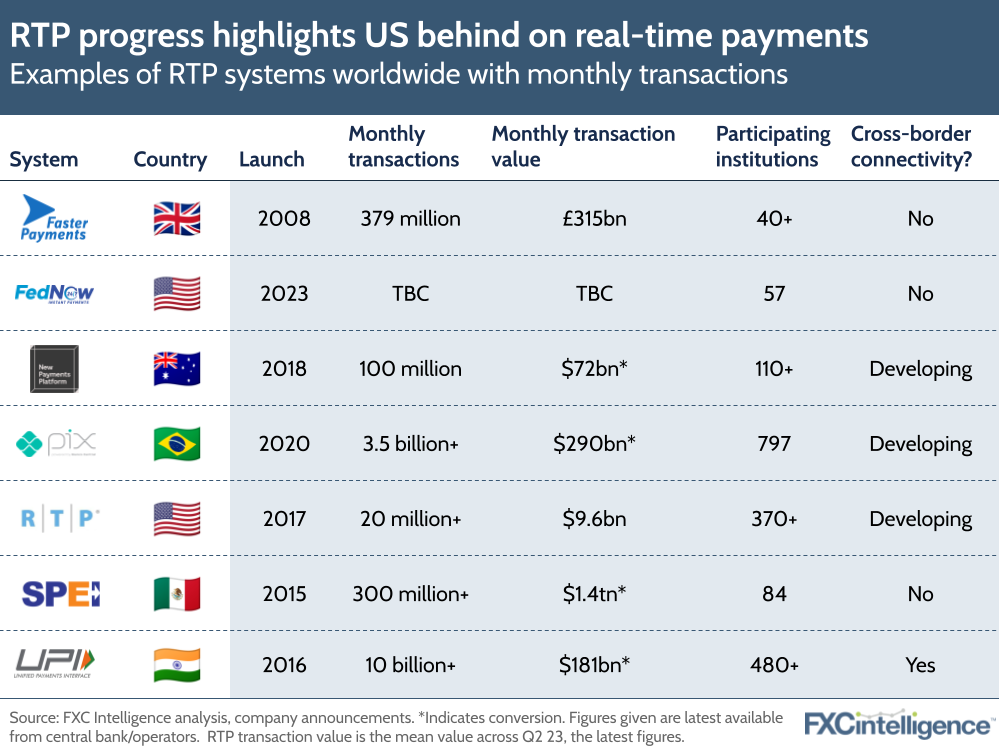Last week, banking association and payments company The Clearing House announced that it had hit a milestone of one million daily payments for RTP – the private real-time payments system that more than 370 financial institutions in the US use to enable transfers. While this may be cause for celebration, when comparing the number of transactions across several other real-time payments systems worldwide, the gap between RTP and similar systems becomes even clearer.

The examples above are just a fraction of the world’s 40+ real-time gross settlement systems – designed to enable instant transfers, clearing and settling of money worldwide. However, they also show the extent to which these systems have become embedded in the payments culture of their respective countries.
For example, while the US’s RTP system currently enables over 60 million transactions a month, Australia – a country with a population of 26 million, compared to 332 million in the US – is seeing 110 million transactions, with an overall value of $70bn.
As discussed in our recent report, regulatory issues across 50 states, banking challenges and the strength of the check have held the US back, but it has now introduced a federal instant payments system, FedNow, through which it helps to drive competition amongst banks.
In other countries, real-time payments has already become a backbone of the payments system, driven by the growth of mobile and financial inclusion. India’s UPI system is used by hundreds of millions of people at home and abroad, while the majority of banks in the UK are now able to at least receive Faster Payments.
While most real-time payment systems have been domestic, some of them have been looking to interoperability projects to enable faster payments across borders, including UPI and RTP (as well as Singapore’s Fast and Brazil’s Pix). Bringing together these systems could help close the payments gap, but it will take time.
How do banks worldwide compare on their cross-border payments capabilities?


